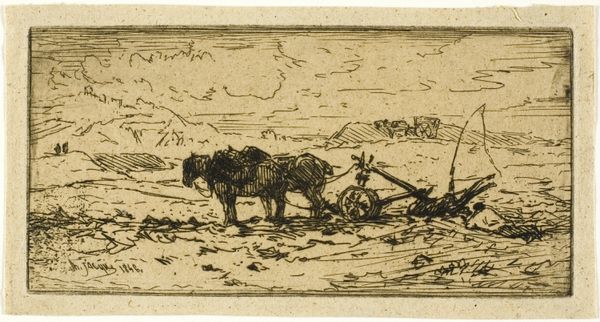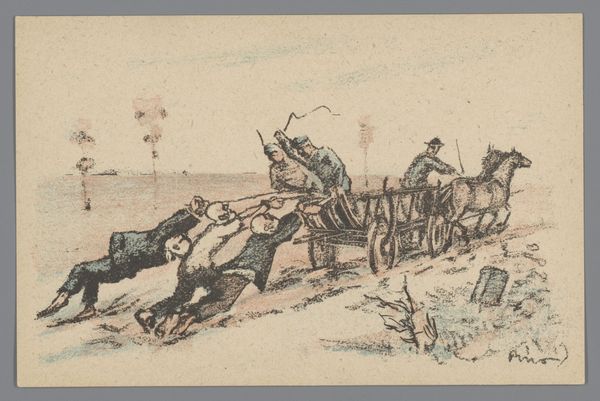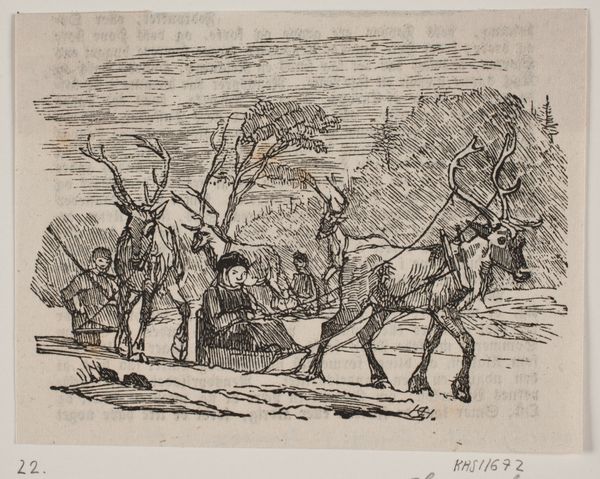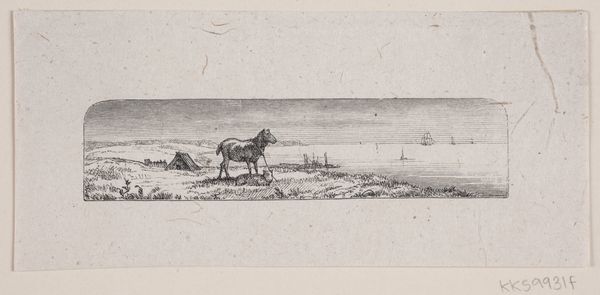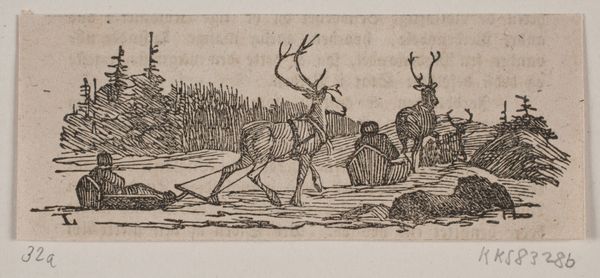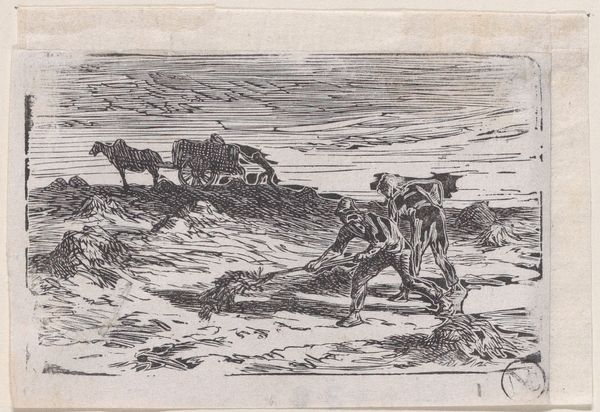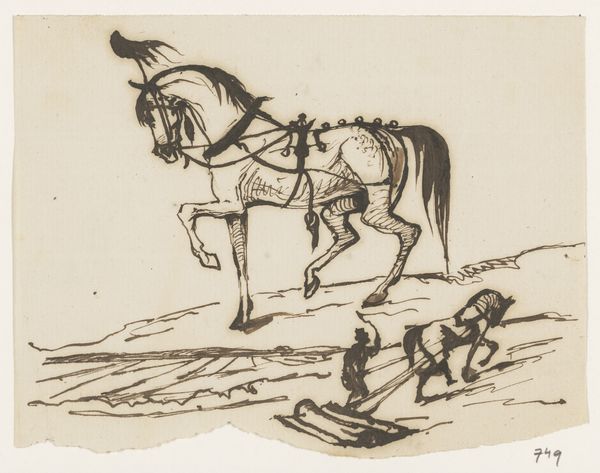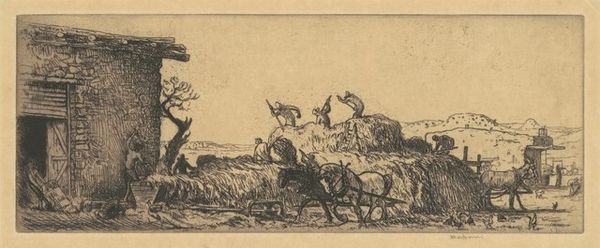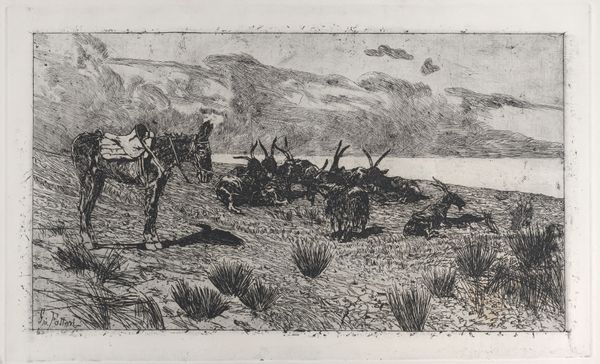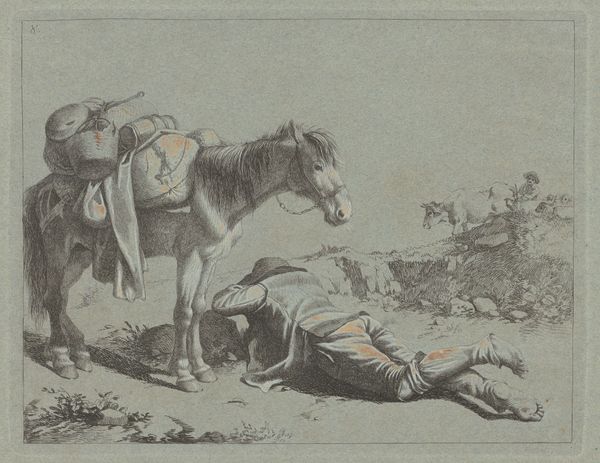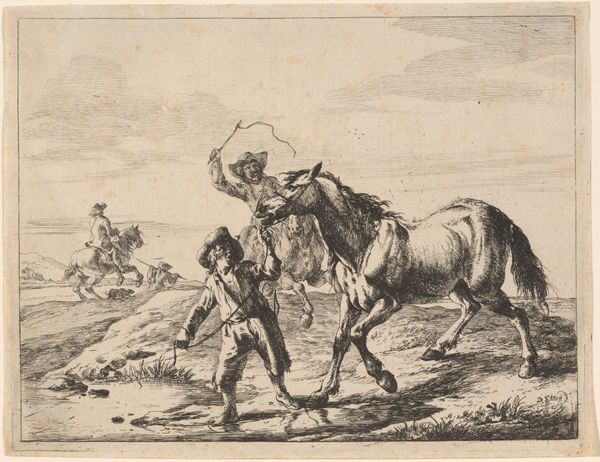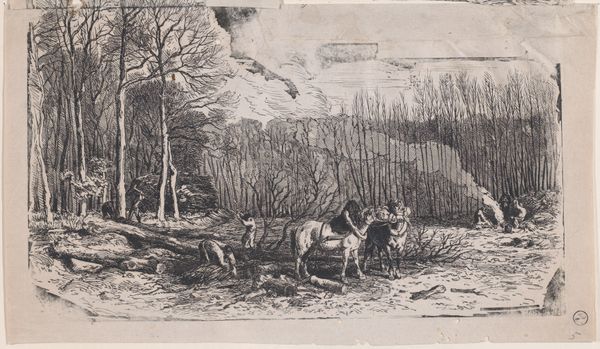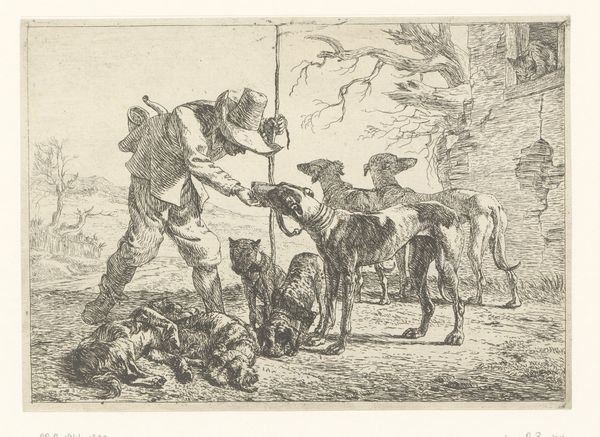
drawing, ink, pencil
#
drawing
#
narrative-art
#
ink
#
pencil
#
expressionism
#
history-painting
#
realism
Dimensions: height 90 mm, width 142 mm
Copyright: Rijks Museum: Open Domain
Curator: Looking at this drawing, I'm struck by the stark contrast between the desaturated landscape and the brutality it depicts. The figures almost blend into the bleak background, making the violence seem commonplace, indifferent. Editor: That's precisely the intent, I believe. What you're observing is a work by Mihály Biró from 1920, aptly titled "Miklós Horthy on Horseback Spits on Murdered People." The artist executed it using pencil and ink. It's a potent statement regarding the White Terror in Hungary. Curator: Yes, I recognize Horthy. It's a very raw and accusatory image. I'm trying to parse Biró's strategic rendering here. How do the artistic means convey such charged sociopolitical meaning? Editor: Context is paramount. Following the brief Hungarian Soviet Republic, Horthy's forces engaged in brutal reprisals against suspected communists and Jews. Biró, an active Social Democrat, utilizes this drawing to visually indict Horthy. The act of spitting is powerfully symbolic, showing utter contempt. Curator: Indeed, it's the spatial relationships between figures that emphasize power dynamics here. Horthy, elevated on horseback, literally looks down on the victims. The men in uniform, holding guns, stand in contrast with the defiled corpses. The artist’s choice to depict naked bodies is quite visceral too. Stripped bare, and with their bodies scattered like refuse... Editor: Precisely. The dehumanization is made palpable, forcing viewers to confront the horror of extrajudicial violence. The drawing possesses this urgency. Given the political upheaval of the time, such pieces served to stoke opposition. The choice of materials like pencil and ink adds immediacy. Curator: It's a successful blend of Expressionism and Realism, a technique leveraged to deliver a specific socio-political perspective. In short, Biró wanted to use this drawing to trigger discourse. It makes one wonder if we still succeed to imbue such gravity today through art. Editor: I believe Biró's piece showcases how artists serve as social critics. Looking at it now, the image pushes one to evaluate the lasting effect of political brutality, urging us not to be passive. It shows, through very economical visual means, just how essential it is for us to stand against inhumanity.
Comments
No comments
Be the first to comment and join the conversation on the ultimate creative platform.
